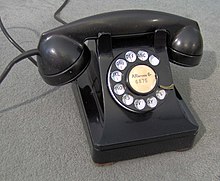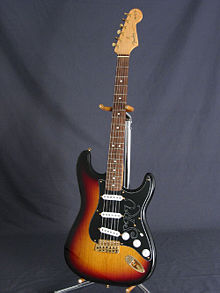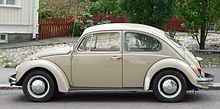Industrial design: Difference between revisions
m r2.5) (robot Adding: is:Iðnhönnun |
|||
| Line 18: | Line 18: | ||
According to the [[Chartered Society of Designers]], design is a force that delivers innovation that in turn has exploited creativity.<ref>[http://www.csd.org.uk/] - [[Chartered Society of Designers]]</ref> Their design framework known as the Design Genetic Matrix determines a set of competences in 4 key genes that are identified to define the make up of designers and communicate to a wide audience what they do. Within these genes the designer demonstrates the core competences of a designer and specific competences determine the designer as an 'industrial designer'. This is normally within the context of delivering innovation in the form of a three dimensional product that is produced in quantity. However the definition also extends to products that have been produced using an industrial process. |
According to the [[Chartered Society of Designers]], design is a force that delivers innovation that in turn has exploited creativity.<ref>[http://www.csd.org.uk/] - [[Chartered Society of Designers]]</ref> Their design framework known as the Design Genetic Matrix determines a set of competences in 4 key genes that are identified to define the make up of designers and communicate to a wide audience what they do. Within these genes the designer demonstrates the core competences of a designer and specific competences determine the designer as an 'industrial designer'. This is normally within the context of delivering innovation in the form of a three dimensional product that is produced in quantity. However the definition also extends to products that have been produced using an industrial process. |
||
According to the [[http://www.idsa.org Industrial Designers Society of America]], "Industrial design (ID) is the professional service of creating and developing concepts and specifications that optimize the function, value and appearance of products and systems for the mutual benefit of both user and manufacturer. Industrial designers develop these concepts and specifications through collection, analysis and synthesis of data guided by the special requirements of the client or manufacturer. They are trained to prepare clear and concise recommendations through drawings, models and verbal descriptions. |
|||
Industrial design services are often provided within the context of cooperative working relationships with other members of a development group. Typical groups include management, marketing, engineering and manufacturing specialists. The industrial designer expresses concepts that embody all relevant design criteria determined by the group. |
|||
The industrial designer's unique contribution places emphasis on those aspects of the product or system that relate most directly to human characteristics, needs and interests. This contribution requires specialized understanding of visual, tactile, safety and convenience criteria, with concern for the user." For more read the article [http://www.idsa.org/what-is-industrial-design "What is industrial design?"] |
|||
According to the ICSID ([[International Council of Societies of Industrial Design]]), "Design is a creative activity whose aim is to establish the multi-faceted qualities of objects, processes, services and their systems in whole life-cycles. Therefore, design is the central factor of innovative humanization of technologies and the crucial factor of cultural and economic exchange."<ref>[http://www.icsid.org/about/about/articles31.htm ICSID.ORG] - Definition of Design.</ref> |
According to the ICSID ([[International Council of Societies of Industrial Design]]), "Design is a creative activity whose aim is to establish the multi-faceted qualities of objects, processes, services and their systems in whole life-cycles. Therefore, design is the central factor of innovative humanization of technologies and the crucial factor of cultural and economic exchange."<ref>[http://www.icsid.org/about/about/articles31.htm ICSID.ORG] - Definition of Design.</ref> |
||
Revision as of 12:04, 9 June 2011


Industrial design is a combination of applied art and applied science, whereby the aesthetics, ergonomics and usability of products may be improved for marketability and production. The role of an industrial designer is to create and execute design solutions towards problems of form, usability, physical ergonomics, marketing, brand development and sales.[1]
The term "industrial design" is often attributed to the designer Joseph Claude Sinel in 1919 (although he himself denied it in later interviews) but the discipline predates that by at least a decade. Its origins lay in the industrialization of consumer products. For instance the Deutscher Werkbund, founded in 1907 and a precursor to the Bauhaus, was a state-sponsored effort to integrate traditional crafts and industrial mass-production techniques, to put Germany on a competitive footing with England and the United States.
Definition of industrial design

General
The objective of this area is to study both function and form, and the connection between product and the user - product as it happens in any other architecture area, being the only difference, that here the professionals that participate in the process are all specialized in small scale design, rather than in other massive colossal equipments like buildings or ships. Architects do not design the gears or motors that make machines move, or the circuits that control the movement (that task is usually attributed to engineers), but they can affect technical aspects through usability design and form relationships. And usually, they partner a whole of other professionals like marketers, to identify and fulfill needs, wants and expectations.
In Depth
"Industrial Design (ID) is the professional service of creating and developing concepts and specifications that optimize the function, value and appearance of products and systems for the mutual benefit of both user and manufacturer."[3]
Design, itself, is often difficult to define to non-designers because the meaning accepted by the design community is not one made of words. Instead, the definition is created as a result of acquiring a critical framework for the analysis and creation of artifacts. One of the many accepted (but intentionally unspecific) definitions of design originates from Carnegie Mellon's School of Design, "Design is the process of taking something from its existing state and moving it to a preferred state." [4] This applies to new artifacts, whose existing state is undefined, and previously created artifacts, whose state stands to be improved.
According to the Chartered Society of Designers, design is a force that delivers innovation that in turn has exploited creativity.[5] Their design framework known as the Design Genetic Matrix determines a set of competences in 4 key genes that are identified to define the make up of designers and communicate to a wide audience what they do. Within these genes the designer demonstrates the core competences of a designer and specific competences determine the designer as an 'industrial designer'. This is normally within the context of delivering innovation in the form of a three dimensional product that is produced in quantity. However the definition also extends to products that have been produced using an industrial process.
According to the [Industrial Designers Society of America], "Industrial design (ID) is the professional service of creating and developing concepts and specifications that optimize the function, value and appearance of products and systems for the mutual benefit of both user and manufacturer. Industrial designers develop these concepts and specifications through collection, analysis and synthesis of data guided by the special requirements of the client or manufacturer. They are trained to prepare clear and concise recommendations through drawings, models and verbal descriptions.
Industrial design services are often provided within the context of cooperative working relationships with other members of a development group. Typical groups include management, marketing, engineering and manufacturing specialists. The industrial designer expresses concepts that embody all relevant design criteria determined by the group.
The industrial designer's unique contribution places emphasis on those aspects of the product or system that relate most directly to human characteristics, needs and interests. This contribution requires specialized understanding of visual, tactile, safety and convenience criteria, with concern for the user." For more read the article "What is industrial design?"
According to the ICSID (International Council of Societies of Industrial Design), "Design is a creative activity whose aim is to establish the multi-faceted qualities of objects, processes, services and their systems in whole life-cycles. Therefore, design is the central factor of innovative humanization of technologies and the crucial factor of cultural and economic exchange."[6]
It is critical to the product development process that the industrial design and engineering aspects of a product are considered simultaneously. This can occur via two methods. The most streamlined method is for the product designer to have an education and/or background that encompasses both industrial design and engineering. Unfortunately, there are very few educational establishments (especially in the United States) that embrace this educational ideology. A survey of engineering and industrial design curricula clearly demonstrates this fault. The other method, which is utilized by most U.S. companies, is to employ or contract with separate teams that focus somewhat independently, with occasional meetings to ensure the primary goals of each team are met or exceeded. The difficulty with the latter process is that there is sometimes a vast disconnect behind the skills, education, and understanding of the two groups. This disconnect can sometimes become extremely cumbersome to the design process, and possibly fatal to the ultimate success of the product.
Process of design


Although the process of design may be considered 'creative', many analytical processes also take place. In fact, many industrial designers often use various design methodologies in their creative process. Some of the processes that are commonly used are user research, sketching, comparative product research, model making, prototyping and testing. These processes are best defined by the designers and/or other team members. Industrial designers often utilize 3D software, computer-aided industrial design and CAD programs to move from concept to production. Also industrial designers may build a protype first and then use industrial CT scanning to test for interior defects and also generate a CAD model. From this the manufacturing process may be modified to make the product better. Product characteristics specified by the industrial designer may include the overall form of the object, the location of details with respect to one another, colors, texture, form, and aspects concerning the use of the product ergonomics. Additionally the industrial designer may specify aspects concerning the production process, choice of materials and the way the product is presented to the consumer at the point of sale. The use of industrial designers in a product development process may lead to added values by improved usability, lowered production costs and more appealing products. However, some classic industrial designs are considered as much works of art as works of engineering: the iPod, the Jeep, the Fender Stratocaster, the Coke bottle, and the VW Beetle are frequently cited examples.
Industrial design also has a focus on technical concepts, products and processes. In addition to considering aesthetics, usability, and ergonomics, it can also encompass the engineering of objects, usefulness as well as usability, market placement, and other concerns such as seduction, psychology, desire, and the emotional attachment of the user to the object. These values and accompanying aspects on which industrial design is based can vary, both between different schools of thought and among practicing designers.
Product design and industrial design can overlap into the fields of user interface design, information design and interaction design. Various schools of industrial design and/or product design may specialize in one of these aspects, ranging from pure art colleges (product styling) to mixed programs of engineering and design, to related disciplines like exhibit design and interior design, to schools where aesthetic design is almost completely subordinated to concerns of function and ergonomics of use (the so-called functionalist school).[7]
Also used to describe a technically competent product designer or industrial designer is the term Industrial Design Engineer. The Cyclone vacuum cleaner inventor James Dyson for example could be considered to be in this category[A].
Industrial design rights
Industrial design rights are intellectual property rights that make exclusive the visual design of objects that are not purely utilitarian. An industrial design consists of the creation of a shape, configuration or composition of pattern or color, or combination of pattern and color in three dimensional form containing aesthetic value. An industrial design can be a two- or three-dimensional pattern used to produce a product, industrial commodity or handicraft. Under the Hague Agreement Concerning the International Deposit of Industrial Designs, a WIPO-administered treaty, a procedure for an international registration exists. An applicant can file for a single international deposit with WIPO or with the national office in a country party to the treaty. The design will then be protected in as many member countries of the treaty as desired.
Notable industrial designers
A number of industrial designers have made such a significant impact on culture and daily life that they have attained a level of notability beyond that of an average designer. Alvar Aalto, renowned as an architect, also designed a significant number of household items, such as chairs, stools, lamps, a tea-cart, and vases. Raymond Loewy was a prolific American designer who is responsible for the Royal Dutch Shell corporate logo, the original BP logo (in use until 2000), the PRR S1 steam locomotive, the Studebaker Starlight (including the later iconic bulletnose), as well as Schick electric razors, Electrolux refrigerators, short-wave radios, Le Creuset French ovens, and a complete line of modern furniture, among many other items. Richard A. Teague, who spent most of his career with the American Motor Company, originated the concept of using interchangeable body panels so as to create a wide array of different vehicles using the same stampings. He was responsible for such unique automotive designs as the Pacer, Gremlin, Matador coupe, Jeep Cherokee, and the complete interior of the Eagle Premier. Viktor Schreckengost designed bicycles manufactured by Murray bicycles for Murray and Sears, Roebuck and Company. With engineer Ray Spiller, he designed the first truck with a cab-over-engine configuration, a design in use to this day. Schreckengost also founded The Cleveland Institute of Art's school of industrial design. Charles and Ray Eames were most famous for their unique furniture design, such as the Eames Lounge Chair Wood and Eames Lounge Chair.
Another example is German industrial designer Dieter Rams, who is closely associated with the consumer products company Braun (where he worked until 1995) and the Functionalist school of industrial design. He is famous for his "ten principles to good design", in addition to designing many iconic products at Braun. More recently, Jonathan Ive, the Senior Vice President of Design at Apple Inc., is credited for designing products for the company, which has a strong philosophy in aesthetics. His designs include the iPod and iPhone.
See also
- Automotive design
- Product design
- Interaction design
- Communication design
- Core77
- Design management
- Industrial Designers Society of America
- Creative engineering
- Designer
- Emotional Design by Donald Norman
- Environmental design
- Experience design
- Hague system
- Product development
- Rapid prototyping
- WikID
Notes
References
- ^ de Noblet, J., Industrial Design, Paris: A.F.A.A. (1993)
- ^ [1] - Western Electric 300-series Telephone Types
- ^ [2] - Industrial Designers Society of America
- ^ [3] - Carnegie Mellon's School of Design
- ^ [4] - Chartered Society of Designers
- ^ ICSID.ORG - Definition of Design.
- ^ Pulos, Arthur J., The American Design Adventure 1940-1975, Cambridge, Mass:MIT Press (1988), p. 249 (ISBN 9780262161060)
- ^ Dyson, James (1997). Against the odds: An autobiography. London: Orion Business. ISBN 9780752809816. OCLC 38066046.
Objects of Desire: Design and Society Since 1750. Adrian Forty, Thames Hudson, May 1992. ISBN 978-0500274125
External links
- U.S. Department of Labor's Handbook: Commercial and Industrial Designers
- Doodles, Drafts and Designs: Industrial Drawings from the Smithsonian (2004) Smithsonian Institution Libraries
